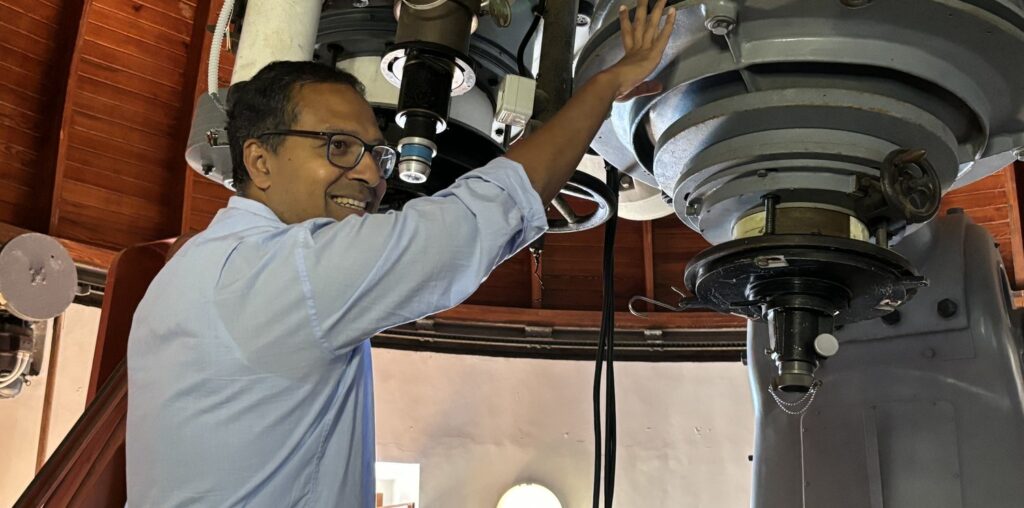
A long-standing history of studying the skies
Similar to other religious tradition, interest in the heavens grew out of a need to set the calendar and establish dates for religious holidays. The day Easter should fall on, for example, led to the creation of the Gregorian Calendar in 1582 by Pope Gregory XIII. Used to this day, it was developed by Aloysius Lilius and modified later by Christoph Clavius at the Collegio Romano using astronomical data.
“What is the interest of astronomy and religion? It’s very simple: Religion has to do with something which is transcendental,” D’Souza said. “Something which is beyond. And astronomy is a study of the heavens. Something which is also transcendental. God is a thing which is most transcendental. And astronomy is a study of the object which are transcendental. The heavens always remind us of divine or God.”
In 1774, the Vatican established the Observatory of the Roman College. After operating out of several locations, Father Angelo Secchi, a Jesuit, relocated the College Observatory to the top of the Church of St. Ignatius in Rome. In 1870, with the capture of Rome, the College Observatory fell into the hands of the Italian Government. Out of respect for his work, however, Secchi was allowed to continue using the Observatory.
Following Secchi’s death in 1878, the Observatory was nationalized by the Italian government and renamed the Royal Observatory at the Roman College, ending — for a few years — astronomical research in the Vatican.
In 1891, Pope Leo XIII declared that a new Vatican Observatory needed to be rebuilt at edge of the Vatican. The new Vatican Observatory remained there for the next forty years. By the 1930s, the city’s lights made it difficult to conduct useful observations. As a result, Pope Pius XI relocated the Observatory to Castel Gandolfo.
By 1961, the same problems made observing difficult at Castel Gandolfo. The Observatory established an office at the Steward Observatory of the University of Arizona in Tucson, Arizona.

